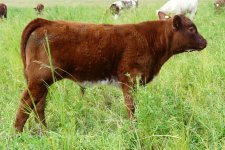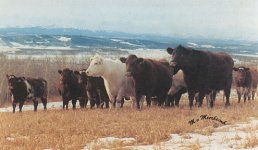justintime
Well-known member
Okotoks said:aj said:He is a calve heifers out on cornstalks kind of bull. However my brothers experience is that his daughters have way small pelvics. So here is one instance where this extreme may not work long term.
That's a good point. I have had it the other way around where a bull throws bigger calves but his daughters calve easily because of their pelvis size. I guess we have to work to identify the bulls that do both. Has anyone used any of the " Native Shorthorns". If so how are they to calve?
I have only used a few of the so called " Native " lines and they have mostly been from the Leader line. I have several other bulls that would probably qualify as Native Shorthorn sires in my semen inventory... Four Point Major, Mandalong Super Flag, Mandalong Suoer Elephant, Scotsdale Rodney, Banner Royal Oak, Cumberland Gay Lad,, Meadowbrook Prince 16th, Meadowbrook Roan Chief, Green Row Dominator, to name a few. My calves have all been very moderate in BW. I have tried to be very selective on what females I use these sires on, as I do not believe that most have them have enough muscle for today's markets. Many of these native Shorthorns had pitiful carcass data when we used to collect carcass data on every Shorthorn we fed in our feedlot. We collected several hundred complete carcass data stats using the Agriculture Canada's Blue tag program of the day. That is one of the main reasons we started to look for new bloodlines and became so interested in the Irish strain at the time. That said, some of these native bulls could be excellent tools to use to bring BWs down to more reasonable numbers. When I look at the list of the native Shorthorns that there is still semen available on, I think I would use some caution with a few of them as well. I remember getting some bigger calves from them many years ago.
I would also add that if your Prophecy bull is siring calves with respectable BWs and calving ease, why would you consider using older genetics unless you are looking for a complete outcross? As I mentioned before, Prophecy looks to me, to be a bull that we should be trying to mass produce in large numbers. If you could fill a pen with a set of bulls like him, and get the proper promotion done on them, I think you would be onto something pretty good.


